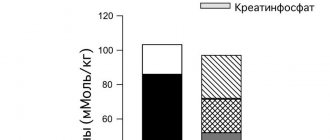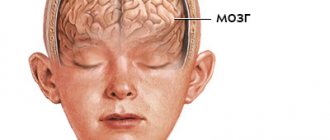Blood provides metabolism, nutrition and even respiration for all cells and tissues in the body. Doctors always closely monitor its indicators, using tests to determine the presence of certain diseases that destroy the body from the inside without visible symptoms. That is why blood tests are regularly taken: both for preventive purposes and to make a more accurate diagnosis.
One of the most important components of blood are red blood cells or, as they are also called, red cells. They have a disc-shaped, doubly concave shape and perform one of the most important functions in the body - transporting oxygen to cells and carbon dioxide for its removal. Their size is not as important as their volume. In a healthy person, the volume of all red blood cells should be approximately the same, or with slight deviations from the norm; in the case of pathology, different cells appear. To identify such abnormalities, a blood test for RDW is performed.
The abbreviation RDW stands for Red Cells Indicies and translated means “red blood cell distribution width.” This indicator can be found in the results of a general blood test, since a separate study of red blood cells is not carried out. It has two markers:
- RDW-CV: shows how much cell size differs from the average (measured as a percentage)
- RDW-SD: Reflects the difference in size between the smallest and largest red blood cells (measured in femtoliters).
Characteristics of anisocytosis, their types
Red blood cells can have different diameters.
| Name | Diameter (µm) |
| Normocytes | 7 – 8 |
| Macrocytes | 8 – 12 |
| Megacytes | > 12 |
| Microcytes | < 7 |
A healthy person has red blood cells of all sizes. But a violation of their ratio is a pathology.
The proportion of normocytes should be 70% of the total volume. The volume of microcytes and macrocytes takes up no more than 15% separately.
Photo: https://pixabay.com/illustrations/heart-red-blood-cells-erythrocyte-2176218/
Classification of anisocytosis
Erythrocyte anisocytosis is divided into several categories.
Based on the size of the predominant cells, they are distinguished:
- Macrocytosis – increased number of macrocytes. When red blood cells are too large, there are fewer of them than needed and they carry less hemoglobin. This means that the blood is not sufficiently rich in oxygen. Low blood oxygen saturation causes a variety of symptoms and health problems.
- Microcytosis – the number of microcytes significantly exceeds the norm. Small red blood cells have a weak ability to carry oxygen, since they have a low concentration of hemoglobin.
- Mixed variant – increased number of macrocytes and microcytes.
Depending on the severity, the following types of anisocytosis are distinguished:
| Name | Designation in analyzes | Proportion of red blood cells with abnormal size (%) |
| Minor | + | 25 |
| Moderate | ++ | ≈ 50 |
| Expressed | +++ | ≈ 70 – 75 |
| Pronounced | ++++ | ≈ 100 |
Reasons for the development of anisocytosis
Etiology of macrocytosis
Vitamin B12 deficiency
Vitamin B12 deficiency is the cause of macrocytosis. A lack of vitamin B12 in the diet is rare and usually occurs only in older people on the “tea-and-toast diet” or in strict vegetarians.
However, deficiency can be caused by the following.
- Lack of intrinsic factor (an enzyme that ensures the absorption of B12) in patients who have undergone gastrectomy (removal of the stomach) or have pernicious anemia.
- Vitamin B12 malabsorption resulting from bacterial infection in the small intestine, tapeworm infestation, certain medications, ileal bypass, enteritis, intestinal malabsorption.
Folate deficiency
Folic acid deficiency can also lead to macrocytosis. Its disadvantage arises due to:
- dietary deficiency;
- increased need during pregnancy;
- congenital deficiency;
- malabsorption in the intestine;
- alcoholism.
Photo: https://www.pexels.com/
Drug-induced macrocytosis
Drug-induced macrocytosis is the most common cause in non-alcoholic patients.
The following categories of drugs are known to cause macrocytosis:
- antagonists (having the opposite effect) of folic acid (Methotrexate);
- purine antagonists (6-Mercaptopurine);
- pyrimidine antagonists (Cytosine arabinoside);
- alkylating agents (Cyclophosphamide);
- inhibitors (inhibiting the action) of tyrosine kinases (Sunitinib and Imatinib);
- Zidovudine;
- Trimethoprim;
- oral contraceptive pills;
- Phenytoin.
The tyrosine kinase inhibitors Sunitinib and Imatinib have been shown to induce macrocytosis in patients with various types of cancer, including renal cell carcinoma (RCC), gastrointestinal tumors, and breast cancer. In patients with RCC, the development of macrocytosis after treatment with Sunitinib may potentially serve as a positive prognostic factor for overall survival.
Persistent anemia of the following types can cause macrocytosis:
- myelodysplastic anemia;
- aplastic anemia;
- acquired sideroblastic anemia.
Photo: https://www.pexels.com/photo/colors-colours-health-medicine-143654/
Etiology of microcytosis
Microcytosis can occur with several different conditions, ranging from mild problems to more serious ones.
Thalassemia
This is a hereditary blood disorder that parents can pass on to their children due to gene mutations.
With this pathology, the body does not produce enough of a certain protein, usually contained in hemoglobin.
Without it, red blood cell formation does not occur properly.
Chronic conditions
Some chronic diseases can cause microcytosis:
- kidney disease;
- certain types of cancer (Hodgkin's disease, non-Hodgkin's lymphoma, and breast cancer);
- diabetes;
- heart failure;
- Crohn's disease;
- inflammatory bowel diseases;
- rheumatoid arthritis;
- lupus;
- infectious diseases (HIV, AIDS, tuberculosis).
Iron-deficiency anemia
The most common cause of microcytosis is a lack of iron in the blood. Iron deficiency anemia occurs due to:
- insufficient iron intake;
- inability to absorb iron due to certain pathologies (celiac disease or Helicobacter pylori infection);
- chronic blood loss due to frequent or heavy menstrual flow in women or gastrointestinal bleeding;
- pregnancy.
Lead poisoning
Children who are exposed to lead-based paint because they live in an old home or because of toys or other items can suffer lead poisoning.
Polluted water and heavy industrial pollution can also cause lead poisoning, although this is less common.
Sideroblastic anemia
Congenital sideroblastic anemia is an inherited blood disease that affects the ability of the bone marrow to produce red blood cells. It also causes microcytosis, but is less common than other causes.
Symptoms indicating changes in red blood cells
There are various symptoms of anisocytosis. Some of them are mild, but they can gradually become severe.
A person with anisocytosis often experiences the following symptoms.
- Rapid breathing. This is a common symptom. Its occurrence is associated with a deficiency of hemoglobin, which leads to insufficient oxygen transport. Thus, patients often feel short of breath after minimal activity.
- Paleness . Since the necessary oxygen does not reach our skin, nails and eyes as it should, they become paler.
- Lethargy. With abnormal red blood cell sizes, oxygen distribution is inadequate. Consequently, general fatigue and lethargy are also common symptoms.
- Tachycardia. Palpitations occur not only after physical activity, but also in normal everyday life. The heart pumps quickly to compensate for the body's need for oxygen, and therefore the number of heartbeats increases.
Some other symptoms may also be present:
- headache;
- low body temperature;
- cold palms and feet;
- dizziness (feeling of falling).
Photo: https://pixabay.com/photos/sad-woman-upset-female-people-2385795/
Preparation for the procedure
Since taking blood for a general analysis does not imply anything unusual, and the study itself is carried out regularly for almost all people, preparation does not require a person to take any special measures, but no one has canceled the standard recommendations before taking tests so that the results are reliable and correctly reflect the clinical picture:
- The RDW test is taken in the morning and on an empty stomach. Dinner in the evening of the previous day before donating blood should be light and at least 8 hours should pass between the last meal and the test, and preferably 12
- It is highly not recommended to drink alcohol 2 days before the test, as it can significantly distort the results
- It is advisable to give up fatty and fried foods, which have a negative effect on the body, 2 days in advance.
- You should not take a blood test after physiological and x-ray procedures
- It is recommended to refrain from smoking one hour before blood collection.
- It is advisable to exclude any physical and emotional stress; before the analysis, a 15-minute break and complete calm are required.
- Particular attention must be paid to the medications you are taking. Almost any medicine can distort the results of a blood test, so before donating blood you need to consult with a specialist: you may have to stop taking the medicine for a while to get an accurate clinical picture, or simply take the drug after the test.
If a repeat blood test is prescribed, it must be taken at the same time (since the composition of the blood may depend on the body’s circadian rhythms) and in the same laboratory. This is due to the fact that units and methods of measurement may vary between laboratories. Only if all recommended measures are followed will the result of the study be correct.
Laboratory diagnostics. Criteria
The main way to diagnose anisocytosis is a blood test.
Red blood cell distribution width (RDW)
This parameter is used to measure the size and volume of red blood cells. RDW increases in accordance with changes in red blood cell size.
The normal RDW parameters are as follows:
| Adults | 13 % |
| Children under 6 months. | 16,8 % |
| Children from 6 months. | 13,2 % |
If results exceed the normal range, this indicates the presence of anisocytosis.
Doctors often compare the RDW result to the mean cell volume (MCV).
Results may show:
| results | Causes |
| Normal RDW and MCV | Anemia may be caused by a chronic illness or blood loss. |
| Normal RDW and low MCV | Anemia caused by a chronic condition or thalassemia. |
| Normal RDW and high MCV | Liver pathology or alcohol abuse. Use of antiviral and chemotherapeutic drugs. |
| High RDW and normal MCV | Deficiency of iron, B12 or folic acid. Possible chronic liver disease. |
| High RDW and low MCV | Iron deficiency, microcytosis. |
| High RDW and high MCV | Lack of B12 or folic acid, macrocytosis. Possible chronic liver disease. |
Photo: https://pixabay.com/photos/medic-hospital-laboratory-medical-563423/
Color index
Another indicator used in the diagnosis of various types of anisocytosis. They indicate the amount of hemoglobin in a red blood cell.
The normal value is in the range of 0.85 - 1.05.
Hypochromia in a general blood test, when the color index is less than 0.85, may indicate the presence of microcytosis. Hyperchromia (indicator more than 1.0) possibly indicates macrocytosis.
How the research works
In modern medicine, equipment plays an important role in treatment. the same can be said about a blood test. On an empty stomach, blood is drawn either from a vein in the elbow or from a finger (this method is especially often practiced in the case of children), and then all the work is transferred to a modern analyzer, which conducts research quickly and with high quality, giving an accurate result .
It counts the number of red blood cells of different sizes per microliter of blood, calculates the average cell size and determines the degree of deviation from the norm of this indicator. The largest and smallest cells are also measured and the difference between this spread and the possible norm is analyzed. This indicator is recorded in femtoliters.
Of course, the equipment may not always be accurate; maximum accuracy of results can only be obtained by manual counting, but this is a very long and labor-intensive process, which is practically not used in modern medicine.
If deviations in this indicator occur, the blood test is performed again to obtain a reliable result, because the diagnosis cannot be made as a result of a single blood sample.
Treatment of anisocytosis
Treatment will depend on the cause of the anisocytosis.
It is important to determine the cause of the problem so that proper treatment can begin.
Anisocytosis is often associated with anemia, and anemia is usually caused by iron or vitamin deficiency.
The usual treatment for iron deficiency is taking iron supplements and changing your diet to increase your iron levels with iron-rich foods.
Iron-rich foods:
- dark green leafy vegetables;
- brown rice;
- beans;
- nuts and seeds;
- meat and fish;
- tofu;
- eggs;
- dried fruits.
Patients can also address vitamin deficiencies by taking supplements and making changes to their diet.
In severe cases of anisocytosis, your doctor may recommend a blood transfusion. This process will replace blood containing abnormal cells with blood containing healthy cells.
Photo: https://pixabay.com/photos/asparagus-steak-veal-steak-veal-2169305/
Anisocytosis and poikilocytosis
Anisocytosis and poikilocytosis refer to abnormalities in red blood cells. The key difference between the two is that in anisocytosis the cells are abnormal in size, while in poikilocytosis the red blood cells are abnormally shaped, meaning they do not have the standard biconcave shape.
Types of cell deformation.
| Name | Characteristic | Causes |
| Spherocytes | No flattened, lighter center | Hereditary spherocytosis, autoimmune hemolytic anemia, hemolytic transfusion reactions, erythrocyte fragmentation disorders. |
| Dental cells | The central part is elliptical or slot-shaped instead of round | Alcoholism, liver disease, hereditary stomatocytosis. |
| Codocytes | The cell looks like a target with a red dot in the center | Thalassemia, cholestatic liver disease, absence of spleen (splenectomy). Rarely, sickle cell anemia, iron deficiency anemia, and lead poisoning are possible. |
| Leptocytes | Thin flat cells with hemoglobin on the edge | Thalassemia and obstructive liver diseases. |
| Drepanocytes | Crescent elongated shape | Sickle cell anemia, thalassemia. |
| Elliptocytes | Slightly oval or cigar-shaped with blunt ends | Hereditary elliptocytosis, thalassemia, myelofibrosis, liver cirrhosis, iron deficiency or megaloblastic anemia. |
| Dacryocytes | Cells have one round and one pointed end | Thalassemia, myelofibrosis, leukemia, megaloblastic or hemolytic anemia. |
| Acanthocytes | Cells with abnormal spiny projections at the edge of the cell membrane | Abetalipoproteinemia, severe alcoholic liver disease, absent spleen, autoimmune hemolytic anemia, kidney disease, thalassemia, McLeod syndrome. |
| Echinocytes | Spiny projections distributed throughout the cell | Kidney disease, cancer, long-stored blood transfusion, pyruvate kinase deficiency. |
| Schizocytes | Red blood cell fragment | Sepsis, severe infection, burns, tissue damage. |
Photo: https://ppt-online.org/46925
Indications for testing
Often, such an analysis is preventive and is taken on a regular basis (on average once a year) to identify diseases in the early stages, when they are much faster and easier to treat. It is prescribed to pregnant women to monitor their general condition and identify problems such as anemia, and for inpatient monitoring.
A general blood test is required during hospitalization to conduct a basic examination and obtain a more accurate picture of the disease, as well as before surgery to prevent possible complications. If the body is severely weakened, this may indicate that the person will not survive the operation; in such cases, it is necessary to undergo preliminary treatment for recovery.
The analysis is prescribed to identify and diagnose different types of anemia, as well as for possible diseases of the hematopoietic system. A general blood test helps track dynamics during monitoring of ongoing treatment, accurately determining the onset of improvements or deteriorations in the body’s condition, which helps to timely adjust treatment. It can be prescribed by a physician, general practitioner, surgeon, neurologist and hematologist.







